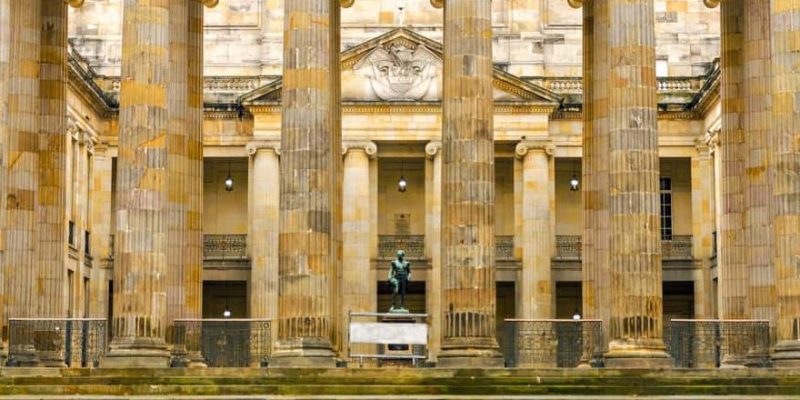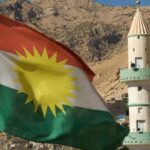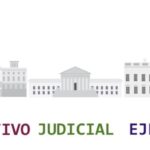We explain what the types of State are according to their territorial organization, political organization or system of government.

What are the types of State?
When we talk about the State, we refer to the set of bureaucratic institutions that formally order, regulate and administer life in society through the monopoly of force (or violence), within the framework of an established territory. In other words, it is the presence of a recognizable state that makes a country a country.
We should not, however, confuse the State with other concepts related to politics, such as “country”, “nation” or “government”. The State is called only the set of institutions that govern a territory in a sovereign manner and whose authority is respected by its population.
However, in colloquial or informal contexts it is possible for all of these terms to appear as synonyms. Of special importance is not to confuse State and government, given that the former is durable, while governments pass.
Now, States are not all the same, and they can occur according to different forms that allow their classification. When we talk about “forms” here, we are referring to its internal organization: its territorial organization model, its political organization model or even its government system. Depending on the criterion we choose, we will have one or other forms of State, as follows:
- According to its territorial organization we can distinguish between unitary States, regionalized States, federal States, dependent States and Confederations or unions.
- According to your political organization we can differentiate between parliamentary republics, presidential republics, semi-presidential republics, one-party republics and parliamentary and absolute monarchies.
- According to your system of government we can talk about democracies, autocracies and dictatorships.
Below we will see each of these categories separately.
Types of State according to their territorial organization
Taking into consideration the way in which its territory is organized, we can differentiate between:
- Unitary states in which there is a single and central government, located in the capital of the country, which governs the entire territory in a homogeneous manner. Even so, these types of States can be centralist, in which the single government is rigid and total, or they can be decentralized, in which there is a certain margin of regional autonomy granted by the central authority. For example: Colombia, Peru, New Zealand.
- regionalized states which are former decentralized unitary states that gradually gave up more and more sovereignty to their regions or provinces, until they recognized a political status of autonomy, becoming known as “autonomous regions.” For example: Spain, Italy or Serbia.
- Federal states or federations which consist of the union of lower-ranking States, which cede to a centralized government (called federal) an important share of their authority and political functions, but retain a good part of their autonomy and legal provisions. Therefore, in these States there are two levels of law: the local or regional ones, and the federal or common ones. For example: Argentina, Brazil, Germany, Russia.
- dependent states which lack autonomy and full sovereignty over their territories, since it has been granted (or taken away) by a larger and more powerful State. In these cases, the States operate as satellites of the main one, abiding by its laws and obtaining certain benefits in return. For example: Puerto Rico, the Cook Islands, the Republic of Palau.
- Confederate states or confederations which are groups of independent states remotely similar to federations, with the exception that they retain an important margin of autonomy and sovereignty, to the point that they could separate from the confederation simply by wishing to do so. As long as they are part of it, however, they enjoy common policies with the other States and respond as a political and territorial unit.
Types of State according to their political organization
Taking into consideration the way in which they are organized politically, we can first distinguish between republics and monarchies.
Republics are political systems in which public power is distributed among institutions which make up three different branches, autonomous and in charge of maintaining an internal balance: the executive (the government), the legislative (the assembly or congress) and the judicial (justice).
For its part, that Monarchies are political systems in which political power falls to a monarch or life councilor, either totally or partially.
In turn, there are different types of republics and monarchies:
- presidential republics those in which the executive branch falls on a democratically elected president, in charge of directing the country politically, and whose powers are delimited by the other two public powers. This is the case of countries like Venezuela, Argentina, Brazil or the Philippines.
- Semi-presidential republics those in which the figure of the president in charge of the executive is shared with a prime minister, often appointed by him, but who answers to the parliamentary chamber. Thus, the head of government is shared and does not fall entirely on the president. This is the case of countries such as Senegal, Haiti, Poland, France, Russia or Taiwan.
- parliamentary republics those in which the executive power does not fall on a president, but on a prime minister elected from among the parties that make up parliament. This means that the population indirectly votes for its prime minister, but also that the executive branch and the leadership of the State are subject to a greater extent to the legislative branch and the debate between the country's political forces. This is the case of countries such as Germany, Croatia, Israel or India.
- One-party republics those in which the entire government is in the hands of the same and only political party. These republics are not usually democratic and the government structure is usually the same as the State, that is, the State and the government are one and the same thing. This is the case of Cuba, China, Vietnam, Eritrea or North Korea.
- constitutional monarchies, those in which the King or Monarch is in charge of the Head of Government, that is, the full executive power, but his power is always subject and restricted, so that his authority is not absolute nor is it above the law. In fact, the legislative and judicial powers exist and are autonomous. It is considered an intermediate step in history between absolute and parliamentary monarchy. This was the case of countries such as post-revolutionary France or Japan at the beginning of the 20th century.
- parliamentary monarchies, similar to the constitutional ones, with the exception that the King or Monarch occupies more of a ceremonial role, and the executive power falls instead in the hands of a Prime Minister elected from among the parties that make up the parliament, although at the same time endorsed by the King. This is the case of Great Britain, Japan, Sweden, Belgium or Malaysia.
- absolute monarchies, those in which political power and sovereignty rest entirely in the figure of the King or Monarch, without there being any public powers or laws that could limit or contradict it. That is, the King is the absolute political authority in executive, legislative and/or judicial matters, although it is also possible that there are public institutions in charge of each of these branches (a parliament, for example, and some courts), but his power It can never contradict or surpass that of the king. This is the case of Qatar, Oman, Swaziland or Saudi Arabia.
Types of State according to their system of government
Finally, judging according to the system of government they have (democratic or not), we can distinguish between:
- democracies, in which sovereignty resides in the popular will, that is, in the decision of the majorities, who exercise their right to vote to decide or influence matters of public importance. Furthermore, today, in order to be a democracy, a country must respect universal human rights and respect the rule of law (that is, the rule of law).
- dictatorships, non-democratic forms of government, in which a small group exercises political power at will and through force, making political and social change impossible, and often bloodily imposing an established order, without regard to human rights or the rule of law. the law, nor anything other than the interests of the group in power.
- autocracies, forms of government more or less intermediate between democracy and dictatorship, in which a democratic façade is maintained but the institutions of a democracy are undermined, penetrated and manipulated at will by the powerful sectors of society. These types of regimes usually quickly degenerate into dictatorships.
Continue with: Powers of the State
References
- “State” in Wikipedia.
- “Form of State” in Wikipedia.
- “Types of States” (video) in Educatina.
- “Forms of State and Government” in ABC Escolar (Paraguay).





